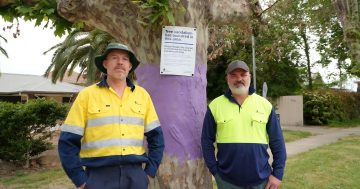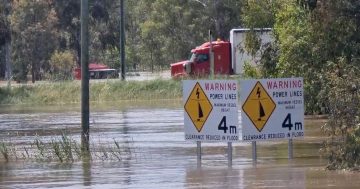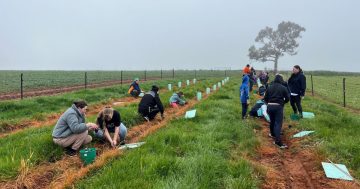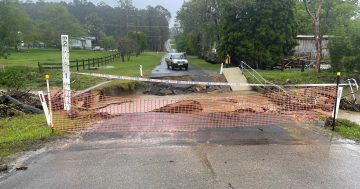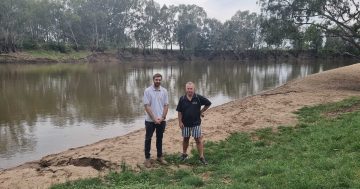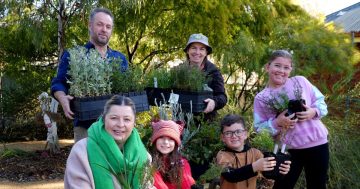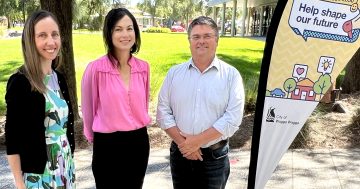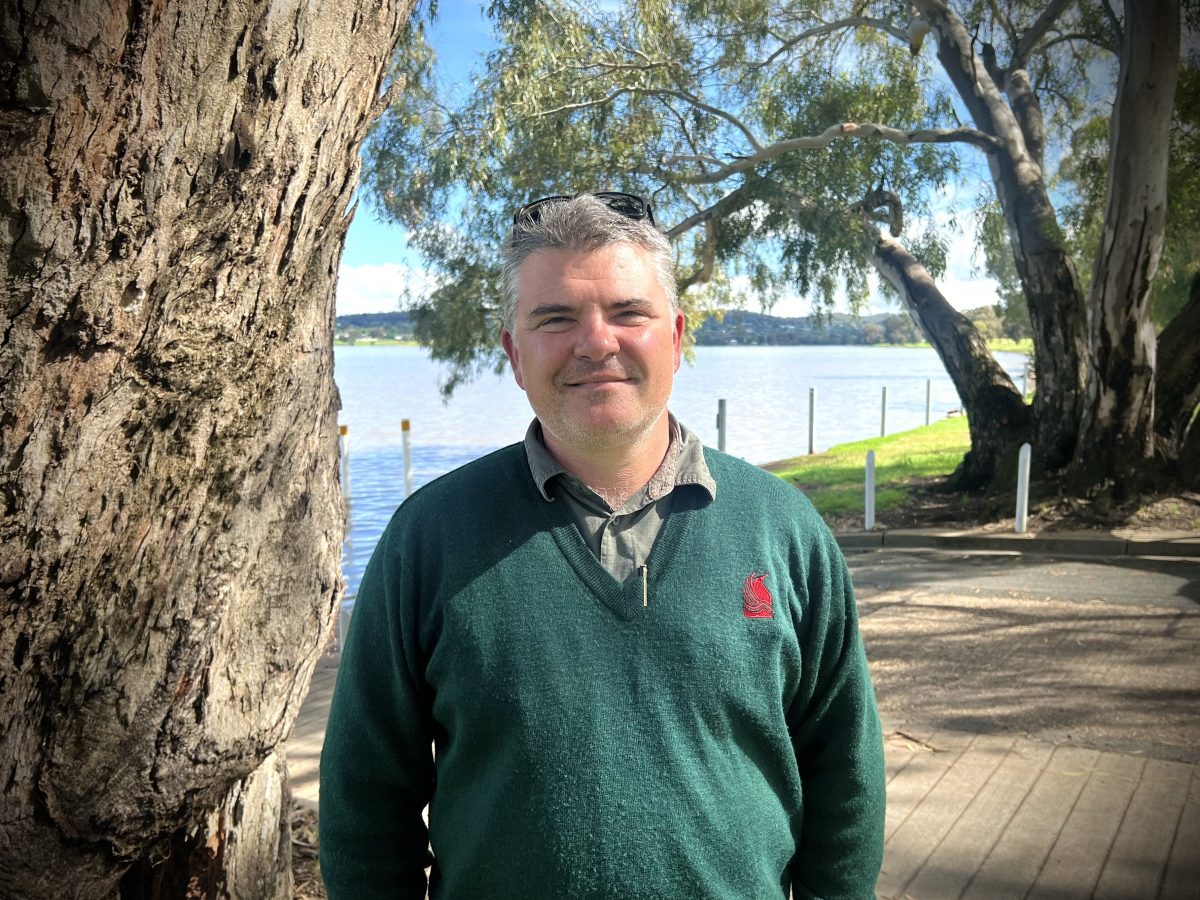
Andrew Oliver takes care of Wagga’s trees. Photo: Chris Roe.
When it comes to managing trees, Wagga Council’s Andrew Oliver says the less we interfere, the better they do.
“That’s probably the main thing in terms of education and trying to explain things to people,” he says.
“Just leave it alone.”
That being said, as the supervisor of the city’s tree maintenance, Andrew is kept busy with safety assessments, planning for streetscapes and new developments, education and nurturing new plantings.
“Like us, trees really are self optimising structures,” he explains.
“When you plant a tree, it’s like a child, it takes time to develop its own managing mechanisms to stand alone.
“Obviously there’s some times as a person when you need some surgery to improve the structure and health and trees are pretty similar.”
With the floods following years of drought, Andrew says they are always working to balance the health of the city’s trees with community safety.
“Adverse weather does affect trees, there’s a lot of symbiosis that goes on with the ground and the tree,” he says, explaining that the balance of funguses that may have sustained and protected a tree during dry weather can be quickly lost during sustained wet seasons.
“When you do get floods come back, that symbiotic arrangement that was there is diminished and they succumb to a lot more fungal disease as the water returns.”
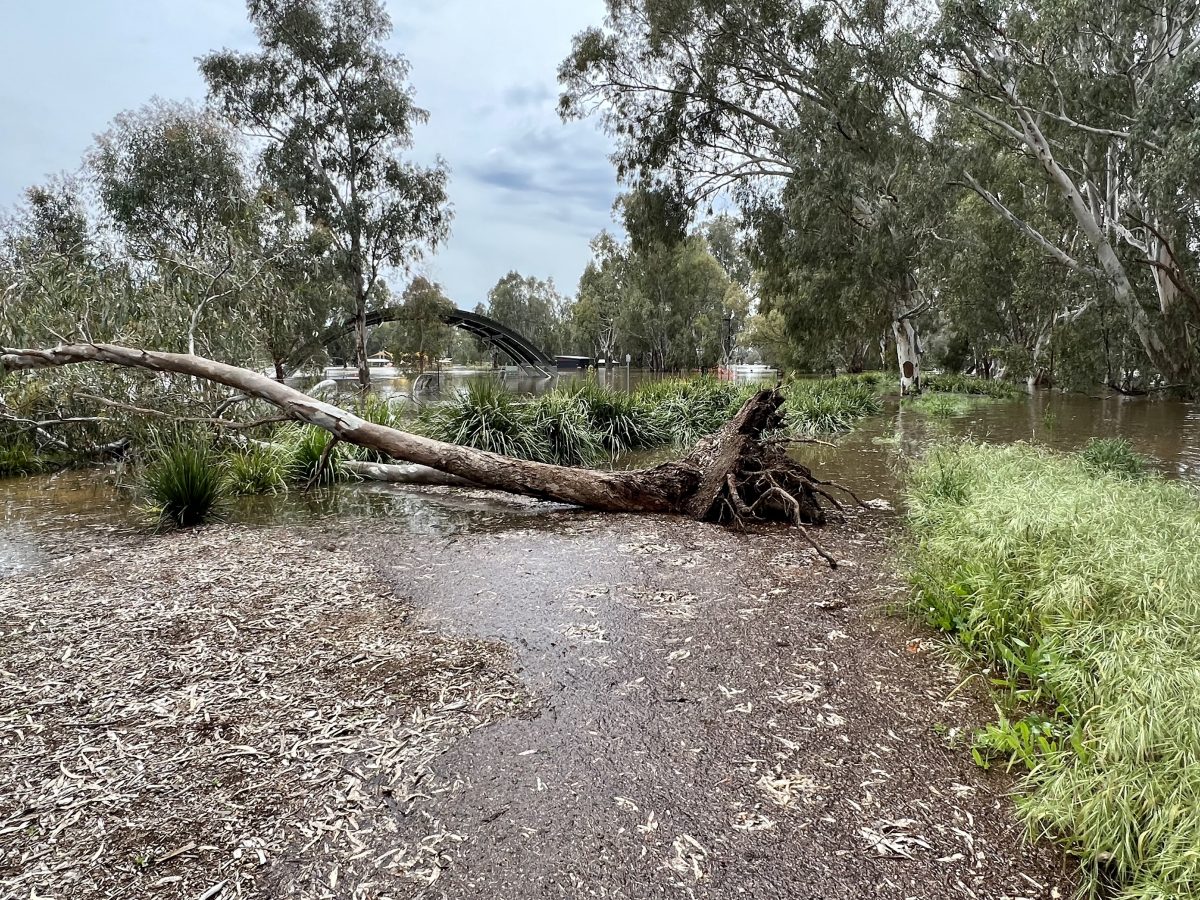
Extreme weather and recent floods have impacted some of the city’s trees, but root systems are often deeper and stronger than we realise. Photo: Chris Roe.
Andrew says they will wait for the water to recede to begin conducting risk assessments.
“We look for heaving in the ground or some movement there to suggest the root plates are unstable,” he says.
“Then we’ll look into it a bit more and asses whether it needs to be totally removed or what sort of mitigation we can do.”
A surprising amount of maths comes into play in calculating a tree’s viability and council uses dedicated software for the task.
“It’s to distance people’s opinion and rely on the data that you capture,” he says, outlining the different factors that weigh on the assessment.
“(Human) occupancy is your underlying target rating, then we look at defects, the size of the limb with that defect, the potential that it has to cause injury, etc.
“That then generates a risk score, which is what we base a lot of our work off.”
Crews will then get to work to limit the risk and, if possible, preserve the health of the tree.
“By reducing the mass of that limb, we can still safely retain things because you’ve reduced the actual potential for failure and our risk assessment actually allows us to quantify that and we can reduce the mass and get into something that’s considered acceptable.”
Andrew began his career in landscape horticulture before moving into trees and focussing on arboriculture.
With a growing focus on reintegrating nature into urban environments, he says there are plenty of employment opportunities for those with a green thumb.
“The beauty of it is there’s a lot of areas you can specialise in which all interact,” he says.
“A lot of people obviously enjoy the climbing factor and the technical components to pruning trees and removing trees but as they get a bit older, they start looking into other areas.”
When it comes to living safely with trees in an urban environment, Andrew says it comes down to commonsense.
“I always just encourage people to look up and look for anything that’s structurally unstable,” he says and suggests community members engage with tree management through the SNAP SEND SOLVE community reporting app.
“You’ve got that GPS point and by changing the mapping to a satellite view, you can see there’s that tree over there.
“And the beauty of that is that I can just use that and create that link in our workflow.”
If you’ve noticed an issue with a tree near you, get in touch with Andrew and the WWCC team through the app.
You can learn more and download SNAP SEND SOLVE here.







